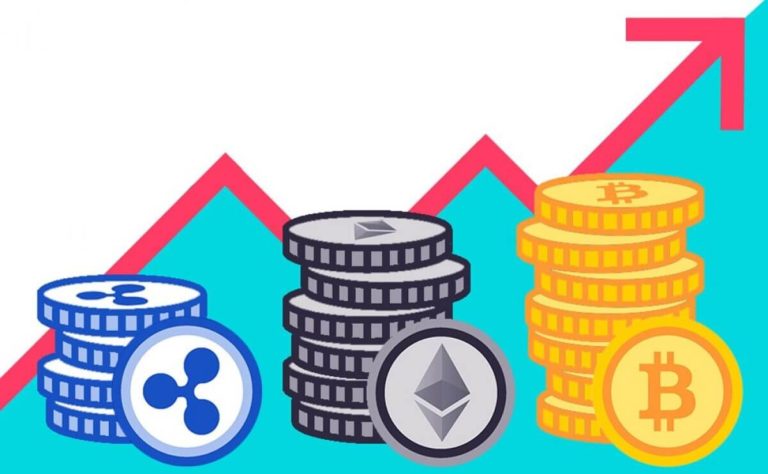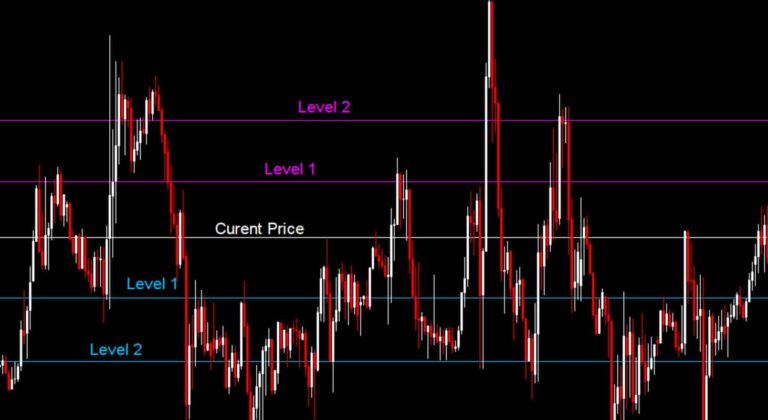60+ Crypto Terms And Their Meanings

The crypto world continues to grow and this includes both cryptocurrencies and their enabling technologies such as the Blockchain and mining.
However, given this fast-paced growth, new terms and philosophies have sprung up so quickly. So much that even tech-savvy persons new to the crypto world often find themselves lost.
To help you clear off the confusion, this post presents the 60+ most popular crypto terms and their meanings.
- Blockchain – A Blockchain is a unique form of information storage that makes it very difficult or nearly impossible to hack, cheat, or manipulate recorded information. These are called immutable records. It consists of linked data blocks, chained together using a hash function.
- Block – A block is the individual collection of information for a specific period in a Blockchain database. A block can contain any type of information and in any quantity. While Bitcoin, for instance, contains mainly text, Ethereum blocks contain computer apps, while NFT blocks contain images or other media.
- Distributed Ledger – Copies of a Blockchain are distributed to as many users (or miners) as possible. And consensus is reached by 51% of all users. So, the larger the network, the more difficult it is to hack or break.
- Permissioned/Permissionless Ledger – Bitcoin is a permissionless public ledger, that anyone can join immediately. Ripple, on the other hand, is a permissioned Blockchain, which means, you must be authorized first, to gain participation rights.
- Decentralized Autonomous Organization (DAO) – This is a company that is founded on the principles of decentralized networks. No leaders are dictating to the rest. Rather, everyone is equally involved in the company or organization, following previously laid-out rules.
- Decentralized App (dApp) – A dApp is a computer app that does not run on a single computer or a centralized network. Rather, it runs on a Blockchain or any other decentralized P2P network and this makes it autonomous.
Cryptography Terms
- Encryption – The process of securing information by obscuring the data. Digital encryption systems often use mathematical systems to encode and decode information.
- Asymmetric Cryptography – This type of encryption uses a private and public key pair to handle data. That is, if you encrypt information using a private key, then only its public key can decrypt it. Similarly, if you encrypt data using a public key, then only its private key can decrypt it.
- Private Key – A phrase of alphabet characters and as the name implies, this key must be kept private. It is the private part of the private/public key pair that make up asymmetric cryptography. If a thief or hacker should get hold of your private key, then they can read your encrypted emails, monitor your encrypted Internet traffic, or steal your cryptocurrencies.
- Public Key – Also a phrase of alphabet characters, which is part of an asymmetric cryptography system. It allows users to accept encrypted information from the public, such as emails or secure https:// browser connections. And in the case of cryptocurrencies, it also functions as an address to accept payments.
- Hash – This is a phrase of characters with a specific length, usually derived from data of varying lengths. Some hashes like Bitcoin’s 256-Bit hash are 64 characters in length. Hashes are used to verify the integrity of data, such as the contents of a previous block on a Blockchain.
- Hash Function – A hash function will take data of any length as its input, then produce data of a fixed length as its output. Many network systems include hash functions that let the receiving program verify the integrity of data it just received by hashing the received data and cross-checking with the sender’s published hash of the data. Popular hash functions include MD5, SHA-1, and SHA-256.
- Algorithm – A cryptographic algorithm is a specific computer process to handle encryption, decryption, signatures, hashing, and user management. Each technology, platform, program, or cryptocurrency has a unique algorithm that sets it apart.
- Seed Phrase/Salt – A list of characters, including A to Z, numbers from 0 to 9, and special characters such as “@*$” that are used to improve security in cryptography. By adding a long salt to a password, the resulting hash becomes increasingly more difficult to crack. Seed phrases, on the other hand, are used by apps to generate numbers for encryption.
- Signature – This is the encryption of a message using the sender’s private key. And if you can decrypt that same message with the sender’s public key, then it must have come from the sender. There are also variations to it, which might include a hash to guarantee data integrity.
Transaction Terms
- Address – This is a public key. And in cryptocurrencies, it is used as a payment receiving address. Then you use the private key to move funds away from the address.
- Escrow – Some crypto platforms offer this service to facilitate transactions between strangers. Say you want to sell crypto to someone for fiat currency. A platform like Binance will hold the exact crypto sum in escrow. Then once the buyer pays you and you confirm it, the platform will release the funds to the buyer.
- Wallet – A wallet is any system that makes it easier for you to manage your cryptocurrencies and keys. It could be a software or hardware device or even a piece of paper. The safest wallets are not accessible from the web.
Trading & Investing Terms
- Initial Coin Offering (ICO) – A capital-raising activity for a new cryptocurrency or other Blockchain-related startups. ICOs are usually unregulated compared to IPOs (Initial Public Offering).
- Bear Market – An asset or market with falling prices.
- Bull Market – An asset or market with rising prices.
- Stop Orders – An automated instruction to either buy or sell an asset if its price falls to a certain level.
- Limit Order – An automated instruction to either buy or sell an asset if its price rises to a certain level.
- Scalping – A trading method that focuses on quick but small gains often lasting a few seconds to minutes. A scalper may make little gains per trade, but he will make numerous trades in a day, resulting in significant gains.
Software & Programming Terms
- Mempool – A contraction of memory and pool. It is temporary storage for cryptocurrency transactions until a certain number of transactions can be grouped into a single block and hashed. That’s why Bitcoin transactions must take a little time to process.
- Consensus Mechanism – A process of achieving an agreement on legal transactions between the different computers in a network. Bitcoin uses Proof-of-Work. But other mechanisms like Proof-of-Stake and Proof-of-Capacity also exist.
- Fork – A change in the software that runs a particular Blockchain. If the change is minimal and still works with software clients that have not been updated, then it is a soft fork. But if the change is extensive and does not run on un-updated software, then it is a hard fork.
- KYC – Know Your Customer. A process for crypto platforms to prevent money laundering and other financial crimes.
- Pump And Dump – Artificially inflating the price of a crypto coin or other assets. And when the public notice the rising price and starting buying in, the perpetrators sell off the artificially inflated assets. Usually happens with shitcoins.
- 51% Attack – A cyberattack that tries to take control of the consensus mechanism of a Blockchain by providing 51% or more of the network’s computing power.
- Rug-pull – A type of scam where the developers of a crypto project suddenly abandon the project and vanish with the investor’s funds.
- Quantum Proof – A Blockchain system or cryptocurrency that cannot be easily hacked using a quantum computer. The problem here is that quantum computers, when fully available, will render the current cryptography systems useless.
- Double Spend – Any method to spend a crypto coin more than once. It is usually a result of a flaw in the coin’s design and can be exploited by hackers.
Mining Terms
- Mining – The process of helping to validate Blockchain transactions for a reward. Though it was possible with ordinary PCs years ago, it is done efficiently with specialized miners today.
- Miner – Specialized hardware devices used in mining cryptocurrencies for profit. Top brands include Antminer, Avalonminer, and WhatsMiner.
- Hash Rate – A measure of how many calculations are performed per second by the computers in the network. For Blockchains a higher hash rate means the network is more secure against attacks.
- Proof of Work – This consensus mechanism proves to other stakeholders on a network that the miner conducted a certain amount of computation in the specified period. It is used by the Bitcoin and Ethereum Blockchains and is currently very energy-intensive.
- Proof of Stake – This is a consensus mechanism where the validators lock up a certain amount of their crypto assets as their stake in the validation of transactions. It removes the need for the complex calculations of the Proof-of-Work system.
- Block Reward – The number of Bitcoins a miner receives for mining a Bitcoin block. This amount reduces after every 210,000 blocks. It has reduced from 50 BTC in 2009 to 12.5 BTC in 2020.
- Difficulty – Mining difficulty refers to how difficult it is to mine a block of a particular cryptocurrency. This difficulty is often correlated to computing power and electrical energy. So, the higher the difficulty, the more computing power and energy costs involved.
Networking & Protocols Terms
- P2P – Short for Peer to Peer. A computer network where all the connected nodes are equals. This is the foundation of decentralized networks, unlike the client/server method of centralized systems.
- Scalability – Ability to process transactions faster. Blockchain systems are still limited in their scalability compared to current centralized systems. But this is improving.
- Smart Contract – Simple computer programs that live on a Blockchain like Ethereum. They automatically execute once predetermined conditions are met.
- Node – Each computer on the Blockchain network that holds a copy of the distributed ledger and helps to validate transactions.
Coins & Tokens Terms
- Coin – Any cryptocurrency that is traded online or used for payments. It could be BTC, USDT, or any other currency accepted by the merchant or platform.
- BTC – Bitcoin. The world’s most popular Blockchain and coin.
- Ethereum – The second most popular Blockchain. Its coin is the Ether.
- Altcoin – Any crypto asset that is not Bitcoin.
- NFT – Non-Fungible Token. A unique crypto asset that could be a collectible like a picture, song, or video. It lives on the Blockchain and has an identifiable owner. NFTs are a perfect means to own digital collectibles.
- Stablecoin – A cryptocurrency that is tied to commodities like gold or reserve currencies like the dollar. An example is Tether (USDT).
- Memecoin – Cryptocoin that is designed just for fun or from an Internet meme. An example is Dogecoin.
- Shitcoin – Any cryptocurrency with little or no discernible value.
- Exchange – Any social platform that enables the interaction of crypto investors or traders with each other.
- DeFi – Short for Decentralized Finance. This is all fintech that is focused on distributed ledger systems that make traditional banking obsolete. DeFi can provide a wide range of services, as long as they are not reliant on a centralized organization like a bank.
- Gas – The fee or cost of running an application, executing a contract, or carrying out a transaction on the Ethereum Blockchain.
- Yield Farming – The process of lending out your cryptocurrencies through liquidity pools managed by smart contracts. It is a popular target for crypto scams.
- 2FA – 2-factor authentication. This means the addition of more security layers to your online account, beyond username and password. It is usually a code sent to your mobile, although other methods like hardware dongles are available.
- HODL – Holding On To Dear Life. The situation when an investor refuses to sell a crypto asset, no matter what’s happening in the markets.
- Fiat Currency – Paper money. The type that is usually backed by nothing, such as the US dollar, Euro, and Japanese Yen.
- Whale – A big-time cryptocurrency investor.
- Shill – A self-promoting crypto marketer, usually out for his interests and not interested in Blockchains or even technology.
- Tokenomics – The economics behind cryptocurrencies and assets.
Conclusion
This concludes our list of the 60+ crypto terms and their meanings. And as you can see, the crypto world is growing with new languages, philosophies, and methods.
Note however, that Blockchain and crypto technologies are just getting started in shaping our world. So, if you are still on the fence, then it’s okay. But continue to keep an eye on what’s happening.





